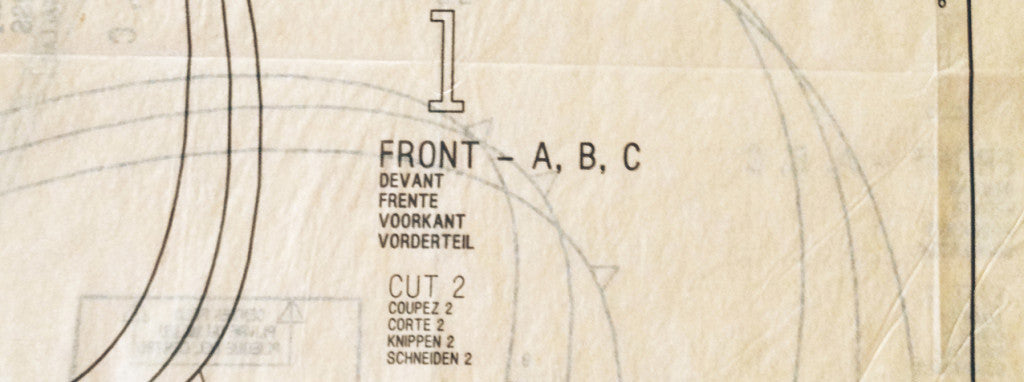Your Cart is Empty
Free Shipping On All Orders In December - No Coupon Code Necessary
Free Shipping On All Orders In December - No Coupon Code Necessary
Free Shipping On All Orders In December - No Coupon Code Necessary
Free Shipping On All Orders In December - No Coupon Code Necessary

July 26, 2017 3 min read
You probably already know which the essential tools are that any sewer must have. Well, we come to add a new list, which you need if you want to create your own sewing patterns. As you know, this is something different from the sewing process, and you can find ready-to-use sewing patterns. So you only need these tools if you want to create unique and original sewing patterns on your own.
 Before proceeding to the actual list of tools that you’ll need, we want to tell you that there are various tool kits that you can find, and they vary in price, depending on their manufacturer. However, you can also get the tools separately and create your own kit. Our list is meant to help you identify the tools that you need to create your own custom sewing patterns. This list is also meant to help you avoid spending a huge amount of money on tools you won’t need.
Before proceeding to the actual list of tools that you’ll need, we want to tell you that there are various tool kits that you can find, and they vary in price, depending on their manufacturer. However, you can also get the tools separately and create your own kit. Our list is meant to help you identify the tools that you need to create your own custom sewing patterns. This list is also meant to help you avoid spending a huge amount of money on tools you won’t need.
Maybe you’ll see beautiful tool kits that cost quite much. Some people may try to convince you that the kit is the best choice for you to start making your own sewing patterns. However, before spending your budget on an expensive tool kit, you need to acknowledge that as far as you already sew, chances are you already have most of the necessary tools you need for starting making your custom sewing patterns. So you can use our list to decide whether you need a complete toolkit or you only need to buy the tools you don’t yet have.
You can find such a ruler at any craft or fabric store. It allows you to see your lines, and you need it especially when you draw perpendicular lines.
The tape is necessary when you change the design of your pattern or when you add pleats. You can get a cheaper tape that works good for you, or you can use Scotch Magic Tape, which is a bit pricier than others, but it allows you to remove the tape if you do any mistakes.
The tracing wheel helps you when you trace your pattern onto another piece of paper. You can use it to avoid ruining your original pattern. You can also use it to transfer markings from a pattern piece to another.
The pencil helps you to easily erase any possible mistakes. You can use mechanical pencils, but it is ideal to use a regular pencil. Make sure you also have a pencil sharpener at hand.
Try to get an eraser that doesn’t rip or tear your paper. It should leave a clean surface with no trace of any erased line. You can look for such an eraser at an office supply store.
You need to use the tape measure to take your measurements – of those of your client, friend or family member. You can also use it to measure curved areas on your pattern, such as for example a neckline or armhole.
To cut your pattern, you can use either your scissors or a rotary cutter. It is not necessary to have them both. However, keep in mind that the rotary cutter also requires a cutting mat, and this is an additional cost.
You can find white banner paper roll at office supply stores. It measures 24 to 30 inches wide and 65 to 72 feet long, depending on the supplier. It has the perfect weight for patterns and it is not expensive.
You can buy French curves from online stores and their price varies depending on the seller. You can find them in packages of four or eight in a set. However, it is enough if you get a set of four. If you don’t want to pay shipping costs, you can also try to find French curves in a store near you.
These are the nine essential tools that you need to have if you plan to start making your own custom sewing patterns. However, there are two optional tools that you may want to have. So let’s see these tools, which you can buy if you want, but they are not necessarily a must-have.
The vary form curve is made of aluminum, so you can rely on it to last forever. It is truly helpful for any type of curve, such as hip curves and armholes.
This tool is ideal for squaring and for drawing perpendicular lines. It is also durable, as it is made of aluminum.
Individual tools have various prices, so you can total the prices for all the tools you need, so you can compare the final price if you get the tools individually or in a toolkit.